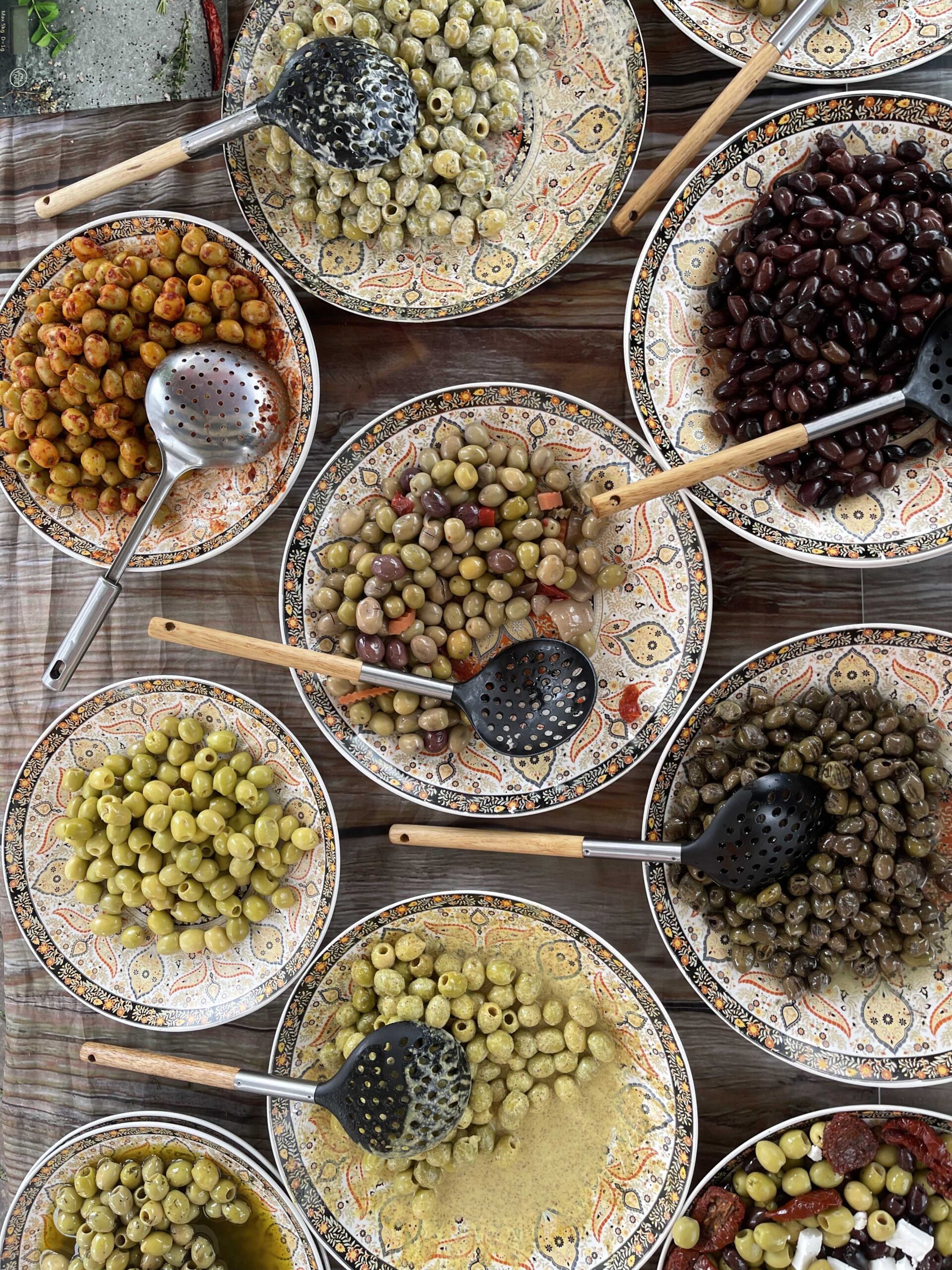The Vibrant Colors of Olive Fruits: A Celebration of Nature’s Palette
Olive fruits are more than just a symbol of Mediterranean heritage; they are a spectacle of nature’s colors, offering a visual and sensory journey through their changing hues. From the fresh green of young olives to the deep purples and blacks of fully ripened ones, the evolution of their color reflects their transformation in taste, texture, and nutritional composition. Each stage of an olive’s life brings forth a unique beauty, a testament to nature’s artistry and the intricate process of ripening.
A Spectrum of Colors: The Evolution of Olives
Green Olives: The Start of a Journey
The earliest stage of olive development is marked by a bright green hue, indicating youth and firmness. These unripe olives are rich in chlorophyll, which gives them their vivid green color. They have a firm, crisp texture and a bitter, grassy flavor, making them ideal for pickling or producing robust, peppery extra virgin olive oil (EVOO). Their bold taste and high polyphenol content contribute to their revered status in the culinary world. Green olives can contain up to 550 mg/kg of polyphenols, making them among the most antioxidant-rich varieties.
Yellow-Green to Light Purple: The Transition Phase
As olives mature, their bright green shade begins to shift toward a yellowish-green or light purple hue. This is a sign that the fruit is entering its transition to full ripeness. At this stage, the olive’s bitterness starts to mellow, and subtle fruity notes emerge. These semi-ripe olives are often used for both table olives and balanced olive oils, offering a milder but still vibrant flavor profile that appeals to a broad spectrum of palates. Research has shown that during this phase, carotenoid levels increase, enhancing the fruit’s antioxidant properties and adding a mild sweetness to its profile.
Purple Olives: A Blend of Sweetness and Boldness
Midway through ripeness, olives take on a stunning purple hue, ranging from violet to deep burgundy. This phase signals the gradual reduction of chlorophyll and an increase in anthocyanins, which are responsible for their color change. The texture softens slightly, and the flavor develops into a harmonious blend of mild fruitiness with a touch of bitterness. These olives are often sought after for flavorful olive oil with medium intensity or for table varieties that provide a rich, slightly sweet taste. Anthocyanin levels can range from 50-200 mg per 100g of fruit, contributing to their deep pigmentation and potential cardiovascular benefits.
Black Olives: The Pinnacle of Ripeness
At full maturity, olives reach their deepest colors—dark purple, brown, or black. The once-bitter notes have transformed into a mild, buttery richness, and the flesh becomes soft and juicy. Fully ripe black olives are a delicacy, commonly found in brined or cured varieties such as Kalamata, Niçoise, or Mission olives. They are also used in smooth, delicate olive oils with low bitterness and a naturally sweet finish, making them a versatile and beloved ingredient in Mediterranean cuisine. During this phase, oleic acid content increases to over 75%, giving black olives their characteristic smooth and rich mouthfeel.
The Science Behind Olive Coloration
The shift in olive color is driven by biochemical changes that occur as the fruit matures. Chlorophyll, responsible for the green color, gradually breaks down while anthocyanins and carotenoids increase, leading to the olive’s deepening shades. External factors such as sun exposure, temperature, and soil composition also influence the precise timing and intensity of color changes, making each harvest unique. Studies indicate that olives grown in higher altitudes tend to retain more polyphenols, which affects both color and flavor intensity.
A Feast for the Eyes and Palate
The beauty of olive fruits extends beyond their flavor—each shade tells a story of transformation, patience, and the natural rhythm of life. Whether you prefer the zesty sharpness of green olives, the fruity balance of purple olives, or the mellow richness of black olives, there is an olive for every taste and occasion. Their colors symbolize not just their ripeness but their culinary versatility and cultural significance.
The diverse colors of olives are a testament to nature’s ability to create beauty in every stage of life. From farm to table, these fruits captivate with their stunning hues and reward us with flavors as rich and varied as their appearance.
So next time you savor an olive—whether in oil, brine, or fresh off the tree—take a moment to appreciate the extraordinary spectrum of colors that nature has painted across its surface. Every olive is a small masterpiece, waiting to be enjoyed.













